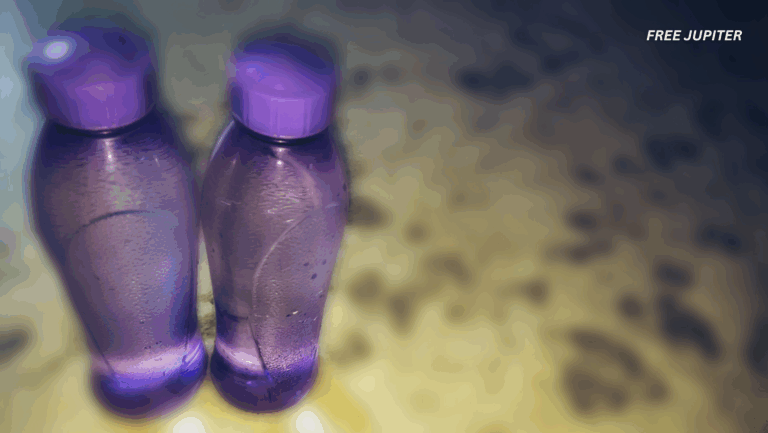Friendly Note: FreeJupiter.com shares general info for curious minds 🌟 Please fact-check all claims—and always check health matters with a professional 💙
When you think of glaciers, images of icy mountains in Antarctica or Greenland might come to mind. But Mars, that rusty red dot in our solar system, has its own version of glaciers—and they’re not what scientists originally thought.
For years, researchers assumed these Martian glaciers were mostly rocky debris held together by a bit of frozen water. But new evidence is painting a very different picture: beneath a thin blanket of dust and stones lies a surprisingly clean treasure—glaciers made of over 80% pure ice.
This discovery isn’t just a neat planetary fact—it could have massive implications for our understanding of Mars’ climate history and its future potential to host human life.
A Sticky Mystery on the Red Planet
From orbit, Mars presents a landscape that’s equal parts alien and strangely familiar. On the slopes of ancient volcanoes and around the rims of wide craters, dark, tongue-like flows stretch across the surface. They look like syrup that oozed down a hill and then hardened, collecting Mars’ signature red dust.
For decades, scientists thought these formations were rockfalls mixed with just enough ice to glue them together. The term used was “debris-covered glaciers,” suggesting the dominant material was rocky rubble.
But that interpretation started to shift around the early 2000s, thanks to advances in satellite technology and radar instruments. New data hinted that these supposed rock piles might actually be hiding large reserves of frozen water beneath their dusty disguises.
Now, researchers have confirmed that those hints were right on the money.
Read more: Scientists Say Life Once Thrived on Mars—Then Caused Its Own Extinction
A Planet-Wide Ice Revelation
A team led by Yuval Steinberg, a planetary science researcher at Israel’s Weizmann Institute of Science, dug into the data—and what they found was astonishing. Using high-resolution radar scans, they discovered that glaciers on Mars aren’t exceptions; they’re surprisingly uniform in their structure, with ice making up the vast majority of their volume.
Specifically, these glaciers are composed of more than 80% pure ice, covered by just a few meters of insulating debris.
And this is consistent across both hemispheres—from the equator-hugging zones to the cooler mid-latitudes.
The Radar That Sees Beneath the Surface
So how do scientists see through Mars’ dusty veil to figure out what’s hiding below?
The magic lies in a tool called SHARAD, short for Shallow Radar. It’s aboard NASA’s Mars Reconnaissance Orbiter and works kind of like a cosmic ultrasound. SHARAD sends radio waves into the ground and listens for echoes that bounce back.
By measuring how fast the radar waves travel (known as the dielectric constant) and how much energy they lose along the way (called the loss tangent), scientists can make educated guesses about what materials the waves are passing through.
Different materials—like rock, sand, or ice—affect radio waves in unique ways. Pure ice, in particular, creates a distinct radar signature. And that’s exactly what Steinberg and his colleagues kept finding.
No matter where they looked, the signature stayed the same: lots of ice, very little rock.
From Chaos to Clarity: Standardizing the Science
Before this study, things were a bit messy. Over the years, researchers had scanned various glaciers using different methods and measurement systems. Some studies reported results in different units, and others had only partial or incomplete data.
“There was no standard approach,” said co-author Isaac Smith, a researcher at the Planetary Science Institute. “Different techniques were used at different sites, so we couldn’t compare the results in a meaningful way.”
To clean up the confusion, Steinberg’s team chose five debris-covered glaciers spread across Mars and analyzed them using the exact same radar method. One of the glaciers had never been studied before, while two had only partial data from earlier investigations.
By creating a uniform dataset, the team could finally compare apples to apples—or rather, glaciers to glaciers.
A Surprising Uniformity
The biggest surprise came after the data was processed: all five glaciers, regardless of their location, had almost identical internal structures.
This consistency suggests that the same processes formed and preserved these glaciers. Either Mars underwent a single, planet-wide glaciation event, or it experienced multiple ice ages that happened under very similar climate conditions.
This revelation pushes scientists to rethink what they know about Martian climate history. It also helps refine climate models, allowing researchers to simulate how water once moved through the atmosphere, how the planet’s tilt may have affected snowfall, and how massive dust storms might have helped preserve the ice over time.
Read more: James Webb Confirms There’s Something Seriously Wrong With Our Understanding Of The Universe
Mars Once Had Snow—Lots of It
Today, Mars is a dry, cold desert where liquid water is nearly impossible to find. The air is so thin that ice at the surface would just vaporize into the atmosphere (a process called sublimation) unless it’s protected by something—like a layer of dust.
But if Mars’ glaciers are made of so much ice, they had to come from somewhere. That “somewhere” is snowfall or frost that must have once blanketed the surface—possibly many times over.
Over the ages, dust storms likely covered these icy layers, creating a natural shield that allowed them to survive for hundreds of millions of years.
Why This Matters for Future Human Missions
Here’s where things get really exciting.
If we send humans to Mars (and space agencies fully intend to), those explorers are going to need water. Not just to drink, but to create oxygen and rocket fuel.
Mining ice that’s 80% pure is a game-changer. It’s far easier and more energy-efficient to extract clean ice than it is to melt and filter dirty slush mixed with rocks and dust.
And since these glaciers are located in different types of terrain, mission planners might have multiple landing site options that give astronauts access to fresh water.
This also means potential Mars colonies won’t have to haul water from Earth—a task that’s expensive and impractical.
What’s Next? More Mapping and Discovery
This study is just the beginning. The team now plans to apply their radar method to other glaciers across Mars. The more sites they scan, the better we’ll understand how water is distributed across the planet.
These efforts could support future missions like the proposed Mars Ice Mapper, a satellite designed to detect shallow subsurface ice with higher accuracy.
Even more intriguing, these glaciers might hold a climate archive—recording Mars’ atmospheric conditions over the millennia, similar to how Earth’s glaciers contain traces of past climates.
Read more: Consciousness Is Not Confined to the Brain, But Is Connected To The Whole Universe, Scientists Say
Final Thoughts: A Frozen Martian Time Capsule
In the end, these debris-covered glaciers are more than just leftover chunks of ancient weather—they’re time capsules. Preserved beneath layers of dust, they contain clues about Mars’ climate, geological shifts, and perhaps even the conditions that once made it more Earth-like.
More importantly, they may be the key to surviving—and thriving—on Mars.
So next time you think of the Red Planet as a dry, dusty wasteland, remember: under all that rubble lies a world of ice, quietly waiting to reveal its secrets—and maybe, just maybe, help us take the next giant leap into space.










